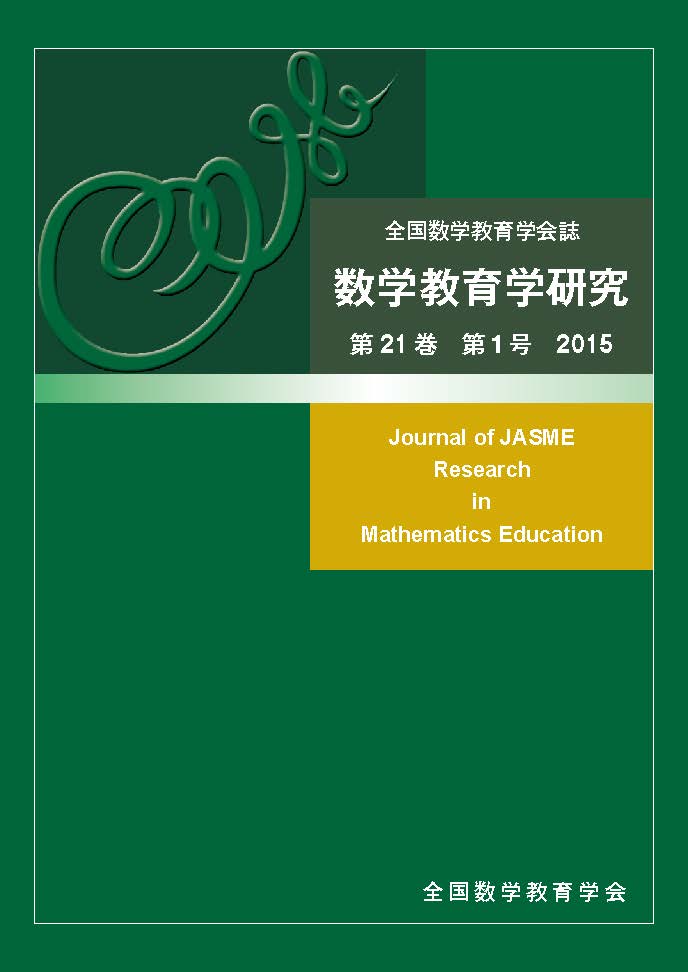21 巻, 1 号
数学教育学研究
選択された号の論文の7件中1~7を表示しています
- |<
- <
- 1
- >
- >|
-
原稿種別: 本文
2015 年 21 巻 1 号 p. 1-10
発行日: 2015/01/31
公開日: 2019/01/17
PDF形式でダウンロード (503K) -
原稿種別: 本文
2015 年 21 巻 1 号 p. 11-21
発行日: 2015/01/31
公開日: 2019/01/17
PDF形式でダウンロード (470K) -
原稿種別: 本文
2015 年 21 巻 1 号 p. 23-37
発行日: 2015/01/31
公開日: 2019/01/17
PDF形式でダウンロード (397K) -
原稿種別: 本文
2015 年 21 巻 1 号 p. 39-51
発行日: 2015/01/31
公開日: 2019/01/17
PDF形式でダウンロード (700K) -
原稿種別: 本文
2015 年 21 巻 1 号 p. 53-61
発行日: 2015/01/31
公開日: 2019/01/17
PDF形式でダウンロード (381K) -
原稿種別: 本文
2015 年 21 巻 1 号 p. 63-73
発行日: 2015/01/31
公開日: 2019/01/17
PDF形式でダウンロード (471K) -
原稿種別: 本文
2015 年 21 巻 1 号 p. 75-87
発行日: 2015/01/31
公開日: 2019/01/17
PDF形式でダウンロード (1180K)
- |<
- <
- 1
- >
- >|

